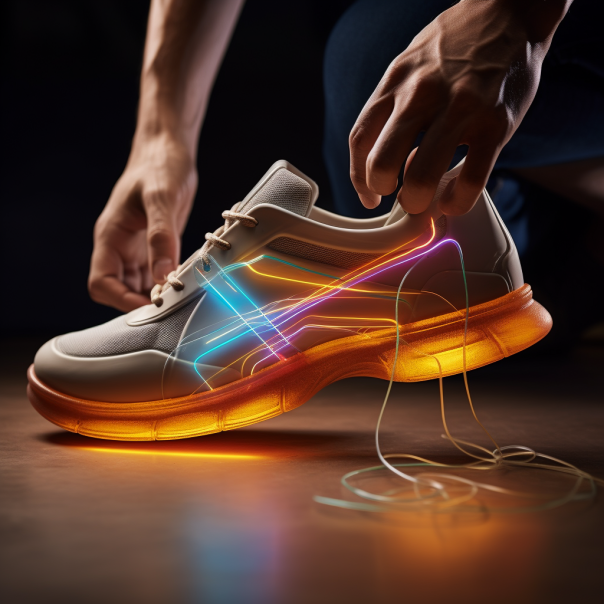Orthopedic shoes have been a common solution for individuals dealing with various foot conditions, as well as those seeking to prevent potential foot problems. These shoes are specifically designed to provide extra support, cushioning, and stability, addressing concerns such as flat feet, plantar fasciitis, and other ailments. With such varied options and designs in the market, one might wonder if these specialized shoes truly deliver on their promise of improved foot health and relief from discomfort.
It’s essential to consider the potential benefits and drawbacks of orthopedic shoes before making an investment in this type of footwear. A variety of factors may influence the effectiveness of these shoes, including the wearer’s specific condition, the quality of the shoes, and the correct fit. To make a well-informed decision, it’s crucial to understand how orthopedic shoes may help alleviate certain foot problems and improve overall foot health.
Key Takeaways
- Orthopedic shoes are designed to provide support and alleviate discomfort for various foot conditions
- The effectiveness of these shoes can depend on factors like the wearer’s specific condition and proper fit
- Considering the benefits and drawbacks of orthopedic shoes can help in making a well-informed decision
Do Orthopedic Shoes Really Work?
Orthopedic shoes are designed to provide additional support, comfort, and ease for individuals experiencing various foot conditions such as flat feet, bunions, or plantar fasciitis. They often come with cushioned soles, arch support, and a broader toe box to accommodate foot irregularities.
The use of orthopedic shoes may alleviate discomfort for some users, especially those with more severe foot alignments. It has been observed that these specialized shoes can distribute body weight more evenly across the foot, thereby reducing pressure on specific joints and areas prone to pain.
In particular, individuals suffering from plantar fasciitis may benefit from wearing orthopedic shoes as they tend to offer adequate arch support, which can alleviate the pressure on the plantar fascia. Furthermore, those with flat feet can benefit from the extra support provided by orthopedic shoes which can help normalize the foot’s function during walking or running.
However, the effectiveness of orthopedic shoes may vary from person to person. Factors such as the wearer’s specific condition, the unique shape or size of their feet, and individual needs may all influence the degree of relief these shoes provide. It is crucial for individuals to seek professional advice, such as from a podiatrist, before investing in orthopedic footwear to ensure it addresses their specific requirements.
In addition to offering immediate relief, orthopedic shoes may also contribute to long-term improvements in foot health when used consistently and appropriately. By addressing the underlying causes of pain and discomfort, these shoes can potentially prevent the progression of various foot conditions and improve overall foot function.
In conclusion, orthopedic shoes have demonstrated potential in improving comfort and reducing pain for individuals with specific foot conditions. While their effectiveness may vary by the person, it is worth considering these shoes if one experiences persistent discomfort related to foot issues or alignment after consulting with a healthcare professional.
Benefits of Orthopedic Shoes
Arch Support
Orthopedic shoes provide excellent arch support, which is crucial for those with flat feet or high arches. This support helps to distribute body weight evenly across the feet, reducing the likelihood of foot pain and discomfort. They also aid in preventing overpronation and supination, which can lead to other foot-related ailments.
Heel and Ankle Stability
Heel and ankle stability are essential for maintaining proper foot alignment and preventing injury. Orthopedic shoes often feature reinforced heel counters and padded collars that help secure the foot inside the shoe, reducing unwanted movement. This added support can be especially beneficial for those with weak or unstable ankles, as well as individuals recovering from ankle sprains or surgeries.
Improved Foot Alignment
Orthopedic shoes promote proper foot alignment by providing support and stability throughout the foot. They are designed with a more spacious and anatomically-shaped toe box, allowing toes to spread out and maintain their natural positioning. Additionally, the insoles and outsoles of orthopedic shoes may be contoured or molded to the foot’s natural shape, further promoting optimal alignment.
Pressure Relief
By offering ample cushioning, orthopedic shoes can help alleviate pressure on the feet. This is particularly useful for individuals with diabetes, as they are more prone to developing foot ulcers and other complications due to excessive pressure. Orthopedic shoes also assist in redistributing pressure points on the foot, which can help reduce the risk of calluses, blisters, and stress fractures.
Common Conditions Treated with Orthopedic Shoes
Plantar Fasciitis
Orthopedic shoes can be beneficial for those suffering from plantar fasciitis, a common foot condition that causes heel pain. These shoes provide arch support and cushioning to help reduce strain on the plantar fascia ligament. It is important to find a shoe that specifically addresses the individual’s needs to manage symptoms effectively.
Flat Feet
People with flat feet often experience discomfort and possibly pain due to the absence of a proper arch. Orthopedic shoes can help by offering structured arch support and distributing body weight evenly across the foot to alleviate stress and discomfort. These shoes should be equipped with features like special insoles, deep heel cups, or reinforcement at the midsole for maximum support.
Bunions
Bunions are bony bumps that form at the base of the big toe, causing discomfort or pain. Orthopedic shoes can help manage bunions by providing a wider toe box to accommodate the deformity, reducing pressure and friction on the afflicted area. In addition, some shoes offer padding or cushioning near the bunion site to improve comfort.
Hammer Toes
Hammer toes are a deformity in which the toe curls downward due to an imbalance in the surrounding muscles, tendons, or ligaments. This can cause pain and difficulty walking. Orthopedic shoes designed for hammer toes provide extra depth and a roomy toe box to accommodate the curled toes and prevent rubbing against the shoe. They may also feature soft materials and cushioning to protect the affected areas.
In each case, it is crucial to consult with a professional to determine the most appropriate footwear for the specific condition. Orthopedic shoes can provide relief and support for various foot conditions, improving comfort and function in daily life.
Considerations Before Purchasing Orthopedic Shoes
Customization
When looking for orthopedic shoes, it’s important to consider if the shoe can be customized to meet specific needs. Some individuals may require additional support, cushioning, or alterations for a better fit. Many reputable brands offer customizable options, such as removable insoles or adjustable straps, which can be tailored to accommodate various foot shapes and conditions. Keep in mind that customized orthopedic shoes may carry a higher price tag, but the investment may be well worth it for long-lasting comfort.
Proper Fitting
A proper fit is essential when it comes to orthopedic shoes. Ill-fitting shoes can cause or exacerbate existing foot conditions such as bunions, hammertoes, or plantar fasciitis. When trying on orthopedic shoes, ensure there is enough room for your toes to move freely, and that your heel is securely supported. Make sure to wear the type of socks or hosiery you would usually pair with the shoes, and try them on in the afternoon or evening when feet tend to be slightly swollen. Consulting with a medical professional, such as a podiatrist, can also be helpful in identifying your specific needs for a properly fitted shoe.
Style and Aesthetics
While functionality is crucial, it doesn’t mean you have to sacrifice style when it comes to orthopedic shoes. Many brands now offer fashionable designs that combine both comfort and aesthetics, making it easier to find a pair that matches your personal preferences and wardrobe. Be prepared to invest some time in researching different brands and styles to find the perfect blend of functionality and fashion for your orthopedic shoe needs.
Alternatives to Orthopedic Shoes
Orthopedic Insoles
Orthopedic insoles are a popular alternative to orthopedic shoes. They can be inserted into regular footwear to provide additional support and cushioning. Available in various sizes and shapes, these insoles can be customized to fit your specific foot arch and needs. They help in reducing foot pain and correcting issues like flat feet, high arches, or pronation. However, insoles are not a permanent solution and need to be replaced periodically.
Specialized Socks
Specialized socks can be used to alleviate some foot-related issues. Compression socks, for example, are designed to improve blood circulation in the feet and lower legs. They can reduce pain and swelling associated with conditions like plantar fasciitis and edema. Another type of specialized sock, called diabetic socks, is designed to help individuals with diabetes. These socks are moisture-wicking, antimicrobial, and have non-binding tops to promote blood flow and prevent infections.
Foot Stretches and Exercises
Incorporating foot stretches and exercises into your daily routine can be an effective way of addressing foot problems without utilizing orthopedic shoes. These exercises can help strengthen the muscles, tendons, and ligaments in your feet, increase flexibility and mobility, and reduce pain. Some examples of foot exercises include:
- Toe curls: Place a small towel on the floor and use your toes to scrunch the towel towards you, repeating the action several times.
- Heel raises: Stand with your feet hip-width apart, and lift your heels off the ground, pressing your weight onto your toes. Lower your heels back down and repeat.
- Arch lifts: Stand with your feet hip-width apart and lift the arch of your foot while keeping your toes and heel on the ground. Hold the position for a few seconds, then release and repeat.
It is essential to consult a healthcare professional before starting any foot exercise routine to ensure it is safe and suitable for your specific needs. They can also provide guidance on proper techniques and frequency.
Conclusion
Orthopedic shoes indeed play a significant role in addressing various foot-related issues. Their design and the materials used provide essential support, comfort, and stability for those who suffer from foot pain, deformities, and musculoskeletal conditions. These shoes are particularly helpful for individuals with diabetes, arthritis, and plantar fasciitis.
The effectiveness of orthopedic shoes is supported by research, testimonials from healthcare professionals, and user reviews. However, it is crucial to consult a podiatrist or an orthotist when considering the need for orthopedic shoes, as each individual’s condition is unique, and the appropriate type of footwear must be determined based on personalized requirements.
Factors such as proper fit, materials, design, and support level should be considered when selecting orthopedic shoes. It is also necessary to be aware of some potential side effects, such as temporary discomfort or improper fit, that may arise during the initial wearing period.
In conclusion, orthopedic shoes have proven to be beneficial for a wide range of individuals with foot-related issues. By offering comfort, support, and proper alignment, these specialized footwear options contribute to improved mobility and overall quality of life for the users.


